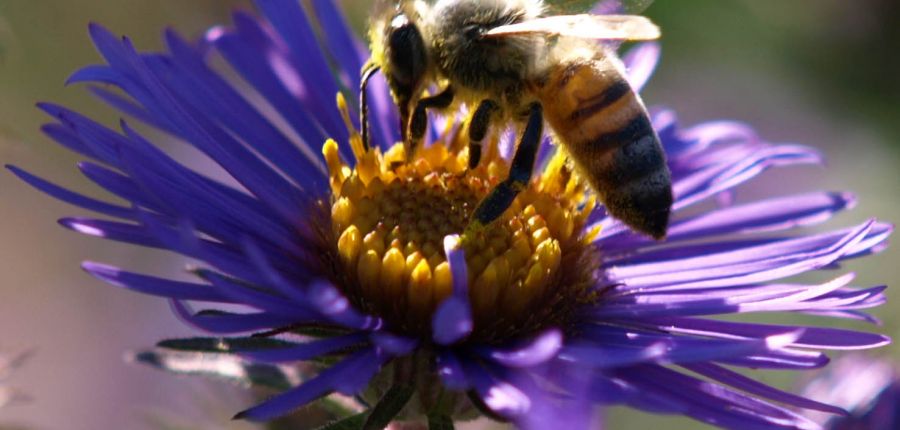Honey production in full swing
Posted By: John The Beekeeper Category: Riverside BeesWe’re in the middle of the busiest time of year for honeybees. Long hours of daylight combined with the recent spell of hot and sunny weather have created ideal conditions for bees and other pollinating insects, flitting from flower to flower, gathering nectar and pollen. The aptly-named honeybees are especially busy and the colony which inhabits our hive is in full swing – a conveyor belt of bees leaving and entering their home from sun up till darkness falls. As soon as it’s light enough, a few bees will venture out in search of the best source of nectar, returning a short time later to explain the exact location to the other bees by dancing up and down the comb – the much-studied ‘waggle dance’ which pinpoints both direction and distance of the choicest nectar available that day.
Inside the Riverside honey factory…
Beekeepers like me do our best to encourage our queen bees to lay as many eggs as possible by providing the best conditions when the bees first become active in spring: a feed of sugar syrup, fresh new comb and lots of space. Modern beehives consist of a series of boxes which mean that the overall size of the hive can be enlarged or reduced to suit the demands of its occupants. We have a new queen in the Riverside hive which is good news as she is a prolific layer, creating thousands of bees over the past few months. As I explained in my last blog about our beehive, a young and fertile queen is capable of laying up to 2000 eggs a day from late spring until mid-summer. Our colony has gone from the tiny cluster, headed by a magnificent young queen, which I found when I first checked in April - to a massive workforce of 70,000 or so worker bees. I added three ‘supers’ on 11 May and when I checked the hive last week, I could barely lift these honey boxes which the bees have already filled with over 60lbs of honey! I returned the following day with another box to provide more space in which the bees can store nectar and begin the magical process of converting this to honey.
How honey is made
When a worker bee returns to the hive with a full load of nectar, it regurgitates this into a cell, having added an enzyme which converts the sugars in the nectar into honey. Bees need water do help do this, seeking out a supply close to their hive. On hot days, honeybees can often be seen congregating around a puddle or similar shallow pool of water. Once water has been added to the nectar, younger bees are assigned to fan the hive, thereby aiding evaporation so that the honey reaches the right state before being capped with pure, almost white wax.
And now for some facts. In order to create a pound of honey, bees must gather nectar from two million flowers, flying the equivalent of more than twice around the world in the process. In a really good year, a honeybee colony can produce upwards of 100 lbs of honey, the average worker bee only making about a twelfth of a teaspoon of honey in its lifetime which helps explain why colonies need to be so large. In summer, when the hive is in full production, worker bees live for only six weeks, dying when their wings wear out with all that flying.
My aim for the next few weeks is to encourage the Riverside bees to concentrate on making honey – rather than swarming!







